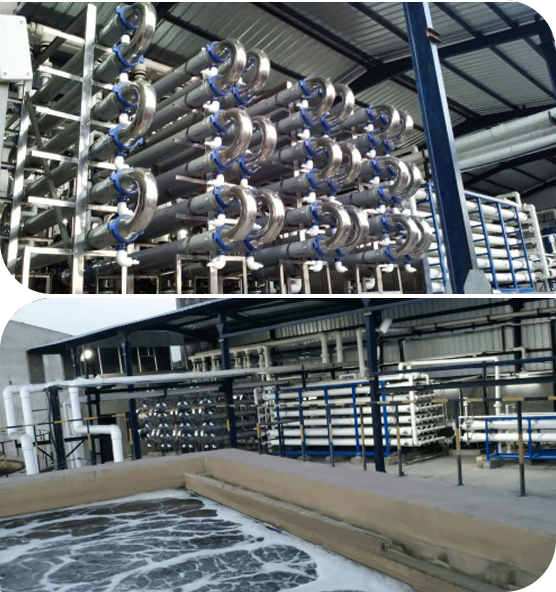
Waterman Engineers Australia is probably the leading producers of Zero Liquid Discharge program. A ZLD program is often a cure system which happens to be used to eliminate many of the liquid squander from a method. The objective of ZLD water procedure is to lessen wastewater economically and develop potable drinking water which is match for normal use. Zero discharge procedure is a sophisticated therapy method that comprises ultrafiltration, reverse osmosis, evaporation and fractional electro deionization. And we have been a effectively-recognized provider of ZLD techniques.
In several Industries, for instance electrical power, oil & fuel, chemical substances, mining and Other people, a great deal of wastewater is generated that needs to be managed. Conventionally, this discharge of wastewater is done through a plant outfall to a floor h2o entire body like an evaporation pond, or occasionally deep properly injected. These practices cause many environmental worries by the general public in many regions of the earth, as water is actually a scarce resource and its administration ought to be monitored. These problems have resulted in the establishment of ZLD processes by a lot of industries to reduce their environmental footprint and enhance sustainability. And, Waterman Engineers Australia are greatest ZLD suppliers yow will discover for this system.
Qualities OF ZERO LIQUID DISCHARGE Technique
The Houses of the Zero Liquid Discharge procedure can vary with regards to the unique design and technologies employed. Even so, some prevalent Houses of ZLD devices involve:
H2o Conservation: Amongst the first aims of ZLD programs will be to conserve water by reducing the discharge of liquid squander to the surroundings.
Higher Water Purity: ZLD units are built to make large-top quality h2o that is certainly free from impurities and contaminants, that makes them appropriate for use in many industrial procedures.
Versatility: ZLD devices in many cases are created to support a broad range of input liquid streams, that makes them adaptable and suitable for use in several industries.
Sophisticated Wastewater Procedure: Zero liquid discharge techniques use advanced wastewater treatment method methods to take away impurities and contaminants from the effluent, manufacturing higher-good quality h2o.
Waste Reduction: ZLD programs help minimize squander by reducing the amount of liquid waste that should be disposed of and by developing a concentrated, sound squander product that may be securely disposed of.
Electricity Performance: ZLD methods might be Electricity-intense due to the large Strength prerequisites of evaporation as well as other wastewater remedy processes. Nonetheless, improvements in know-how are earning Zero liquid discharge units more energy-efficient and price-helpful.
Waterman Engineers Australia manufactures Zero Liquid Discharge (ZLD) units meant to take out all liquid squander, aiming to supply potable water and minimize environmental impact. Their ZLD units ordinarily include things like ultrafiltration, reverse osmosis, evaporation, and fractional electro deionization. Essential technologies used are Slipping Film Brine Concentrators, Compelled Circulation Crystallizer, and Some others, by using a two-stage means of pre-concentration and evaporation/crystallization to recover and reuse drinking water. These techniques are adaptable to different industries, emphasizing drinking water conservation, large h2o purity, waste reduction, and Electrical power effectiveness. Technological requirements are varied and customizable, Zld System Manufacturer Zero Liquid Discharge System taking into consideration factors like drinking water resource, flow fee, and feed h2o good quality.
The necessity for Zero Liquid Discharge (ZLD) methods arises from your necessity to handle environmental concerns connected with h2o scarcity and air pollution. In industries like ability, oil & fuel, and mining, vast quantities of wastewater are created. Historically, this wastewater is discharged into bodies of water, leading to pollution and depleting clean drinking water methods. ZLD units purpose to minimize these impacts by managing and recycling wastewater inside the commercial system, thus conserving drinking water, decreasing squander, and selling sustainability.
When contemplating the technical technical specs of the Zero Liquid Discharge (ZLD) process, essential facets to focus on contain the h2o source it is going to handle, the method's movement fee, the quality of feed water, the levels of cure concerned, the Restoration rate of h2o, procedures for concentrate disposal, resources of design, functioning problems, and process automation and control. These aspects ensure the program's performance, toughness, and effectiveness in treating and recycling industrial wastewater.
Zero Liquid Discharge (ZLD) crops offer Advantages such as h2o conservation, squander reduction, and air pollution avoidance, contributing to environmental sustainability. They are relevant in industries like ability technology, oil and gas, chemical compounds, and mining, the place they help in controlling industrial wastewater properly, lowering the ecological footprint, and complying with strict environmental laws. These units are very important in places experiencing drinking water scarcity and for industries aiming to further improve their sustainability and operational efficiency.
FAQs for a Zero Liquid Discharge (ZLD) method often handle its operational rules, Value-performance, servicing demands, environmental effect, applicability across a variety of industries, and regulatory compliance. These questions enable end users understand the program's Added benefits, technological requires, and suitability for his or her unique wastewater administration needs.
1. Zero Liquid Discharge (ZLD) is really a wastewater procedure procedure created to eradicate all liquid squander.
2. The program's factors are motivated by the particular industrial process, wastewater composition, and regulatory demands.
3. Effluent cure crops remove pollutants from textile effluents to stop environmental contamination.
4. Pros consist of water conservation, pollution reduction, and regulatory compliance.
five. The aim is to minimize environmental effect by recycling drinking water and lessening squander.
six-9. Effluent treatment method crops are phases in wastewater procedure: primary (physical separation), secondary (Organic procedure), and tertiary (Superior remedy).
10. Device operations include things like filtration, sedimentation, biological remedy, and disinfection.
11. Restricting parameters are variables that have an impact on the procedure's effectiveness, like pH and contaminant concentration.
twelve. Design and style issues contain flow amount, effluent composition, and desired quality of addressed drinking water.